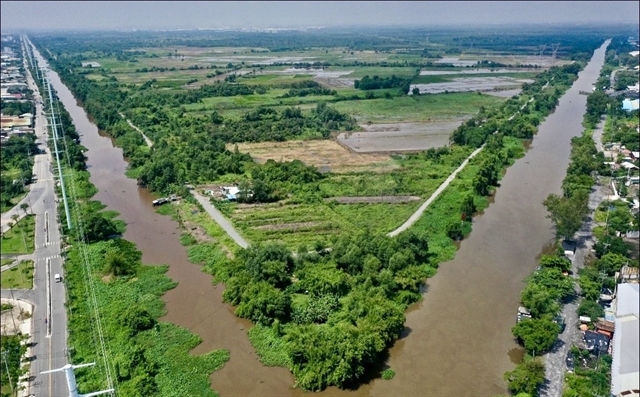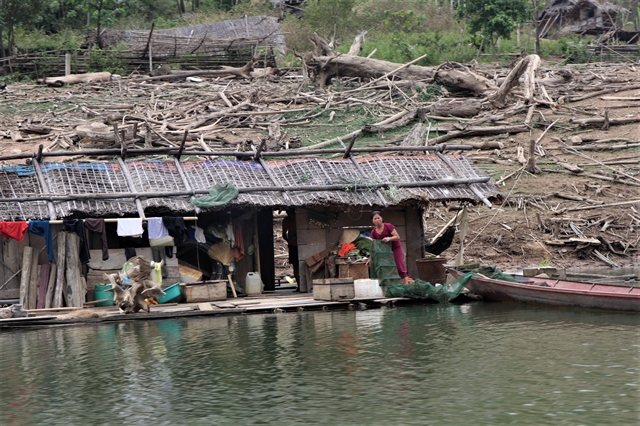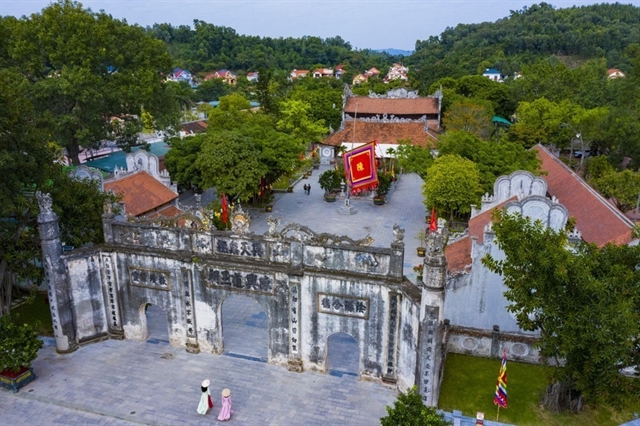 Society
Society


|
| Many among the locals displaced by the construction of Bản Vẽ hydroelectricity project in Nghệ An Province have returned to their original hometown shortly after moving into resettlement homes, claiming insufficient compensation and lack of means of livelihood. — VNA/VNS Photo Nguyễn Văn Nhật |
NGHỆ AN — Many displaced by the Bản Vẽ hydroelectric power project in the central province of Nghệ An have for years abandoned the resettlement homes built for them and returned to their old land.
The reservoir, built upstream of the Lam River in 2004 to support the hydropower station located at what was the former Vẽ Village in Yên Na Commune, Tương Dương District, covers a vast surface area of 8,700 sq.m and is surrounded by the most poverty-stricken localities in the province.
One would need to stop at a small port in Yên Na, hire a motor boat and prepare for an hours-long journey along the edge of the scenic reservoir to reach the little community formed precariously between the water’s edge and the side of the mountain.
Out of 3,022 households forced to relocate, more than two thirds – 2,127 – were asked to move to resettlement areas in another district, Thanh Chương, with the rest moving to another area in Tương Dương.
So far, nearly 300 people from 122 households are living on the reservoir’s edge.
Following the orders, since 2009, Lô Văn Chương with his family left their home in Luân Mai Commune of Tương Dương District for their newly built homes in Ngọc Lâm Commune of Thanh Chương as part of the resettlement plan.
But just one year later, in 2010, he brought his entire family back to the reservoir and has lived and earned his living here ever since.
Since building concrete houses on the slopes of the mountain this close to an unpredictable water body was pointless, they settled for living on crude boats.
“Prior to the dam’s construction, my family did fine, we were not well-off but at least we didn’t struggle much to make ends meet,” Văn Chương told Vietnam News Agency.
“But the relocation to Thanh Chương was not implemented well enough, there are just too many problems. We are a family of five but were allocated merely 1.2ha of land. Sure in Thanh Chương there were schools that our children could go to, but without any means of livelihood made available to us, we decided to return here,” Chương said.
Most other households in this waterfront-slum shared Chương’s story.
Vi Thị Loan’s family packed their things and moved to Thanh Chương in 2010 but barely lived there for a full year before quickly making their way “back home” since they didn’t have enough land to produce crops, the only profession they know.
As a trade-off for means of livelihood, they are willing up to put up with an existence nearly detached from the outside world – no clean water, no electricity, no landlines or stable cellphone coverage. Services like markets, schools or healthcare facilities are completely lacking, which is really not that different from where they just left.
At 8, Lô Văn Hưng is the youngest resident in the community. He is living with his grandparents on the reservoir’s edge while his parents are working for a factory in the resettlement area.
According to a local official, children of the returned households are missing out on a lot as due to the lack of household registration books, they are not entitled to support policies for children in the mountainous areas.
Ngọc Lâm and Thanh Sơn in Thanh Chương districts are two newly established communes with 100 per cent of their population made up of those those displaced by the Bản Vẽ hydroelectricity project. The resettlement areas might sport concrete houses, but everything else that make up for a good living environment was riddled with planning problems.
For example, neither have any markets, a critical service for the rural communities in Việt Nam.
The cultural house in Ngọc Lâm Commune was built in 2005 but its location was both too high and too far from the residential area so it was barely used and fell into a state of disrepair over time.
Livelihood aside, disputes also arose from the different compensation schemes applied during two different time frames.
Between 2005 and 2009, compensation was doled out in line with two Government decrees issued in 1998 and 2004, which stated that those land areas above the flooded level by the dam’s construction would not be accounted for in the calculation of compensation.
But since June 1, 2010, a new decree on compensation for the displaced, which figured in the land area above the flooded level, took effect, leading many to claim that they had not received the compensation commensurate to the land they lost.
Vi Tân Hợi, deputy chairman of Tương Dương District People’s Council, said the return to the reservoir area was causing land management, population management, and social order issues for the local authorities.
To address this issue, the district’s authorities would continue to encourage people to move to their new homes and asked for verification of the compensation claims by the relocated residents in order to pay up what they should be entitled to and ensure their legal rights, Hợi said.
Nghệ An Province’s authorities said they had asked for the Government to allow the State-run Việt Nam Electricity (EVN) to set some of the capital for the Bản Vẽ project to invest in amenities in the resettlement areas such as markets, stadiums, and other cultural facilities in line with the residents’ needs. — VNS




